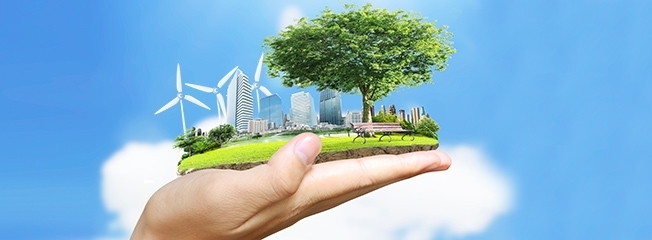 Climate Denial is the rejection of what is now a well established observational fact – our climate is warming and all the fossil fuel greenhouse gases we are pumping into the atmosphere are causing it. Regardless of the tribal GOP stance on the topic, the vast majority do accept that this really is happening. This is not simply wishful thinking, in March of this year, a Yale study published the discovery that ….
Climate Denial is the rejection of what is now a well established observational fact – our climate is warming and all the fossil fuel greenhouse gases we are pumping into the atmosphere are causing it. Regardless of the tribal GOP stance on the topic, the vast majority do accept that this really is happening. This is not simply wishful thinking, in March of this year, a Yale study published the discovery that ….
Seven in ten Americans (70%) think global warming is happening, an increase of seven percentage points since March 2015.
There is however a huge problem – climate avoidance.
What is Climate Avoidance?
According to that same Yale report …
Only about one in three Americans (35%) say they discuss global warming with family and friends “often” or “occasionally,” although this is an increase of nine percentage points since March 2015. However, more say they “rarely” or “never” discuss it (65%).
When faced with something that will dramatically impact our civilisation and has the potential to disrupt the lives of literally billions of people, then there is wide agreement ….
Over half of Americans (58%) understand that global warming is mostly human-caused.
About six in ten Americans (62%) say they are at least “somewhat worried” about global warming.
Six in ten Americans are “interested” in global warming (62%).
About six in ten Americans (61%) think global warming is affecting weather in the United States
About six in ten Americans (63%) say the issue of global warming is either “extremely” (10%), “very” (18%), or “somewhat” (35%) important to them personally
… yet they don’t talk about it.
We are avoiding the topic and we are not doing enough to actually address the topic.
Why is it like this?
It is in our psychology to handle huge challenges like this. When faced with something that we consider to be too big a problem for us to handle as an individual, we simply avoid it and don’t talk about it.
So what can we do that is meaningful?
Psychologist Michael Smyer writes in Scientific American about this and has the following suggestions to break this cycle.I like his suggestions, so here they are …
Get More Information – steps you can take
First, start where you are and get more information. The Nature Conservancy provides a carbon footprint calculator to assess your current carbon habits. The Union of Concerned Scientists provides information about global warming’s impacts and actions we can take, including their top 10 ways to reduce your carbon emissions and save money at the same time.
Realise it’s not just you, we are in this together
Second, realize you’re not alone and find others who share your concerns. A good place to start is the Climate Advocacy Lab and its interactive map that allows you to see public opinion polling on climate issues at the national, state, county, and congressional district level.
Because climate change permeates all aspects of our lives, it’s easy to find an organization that mirrors your own passions. Risky Business applies risk management to the health and economic effects of climate change. Blessed Tomorrow works with religious and denominational leaders to move ahead on climate change based on moral and theological beliefs. Elders Climate Action taps into the large and growing resource of older adults who are concerned about climate change.
Reach out – especially (I would add) to the next generation
Third, reach out to your circles of influence: family members, friends, neighbors and co-workers. For example, after a Graying Green workshop, residents of a continuing care retirement community reached out to the administration. Together, they developed a program to compost the food waste of the community. They had never thought about it until they got together and asked, “How might we make our community more sustainable?”
Tell somebody what you are doing – It commits you to doing it
Finally, commit to one next step and tell someone else about it. Whether taking shorter showers, getting an energy audit or changing your air filters regularly, telling just one other person about it improves the odds of actually following through on the commitment. It also breaks the climate change avoidance habit.
The point is this – small steps by all of us add up – you really can make a difference.
Take Action – and save Money – Top 10 tips
It really is a win-win scenario.
Below are the top 10 steps via the Union of Concerned Scientists.
Who?
These folks. Founded in 1969, they have a membership of over 200,000
Via here, they have a list ..
-
- Switch to a car with better fuel economy. Upgrading from a 20 mpg car to a 40 mpg car can save you 4,500 gallons of gasoline over the car’s life span. At today’s gas prices, that’s a total savings of more than $18,000.
- Make your house more air tight. Even in reasonably tight homes, air leaks may account for 15 to 25 percent of the heat our furnaces generate in winter or that our homes gain in summer. If you pay $1,100 a year to heat and cool your home, you might be wasting as much as $275 annually.
- Buy and use a programmable thermostat for a 15 percent reduction in your heating and cooling emissions and save
$180 a year. During the summer, a setting of 78 degrees Fahrenheit is optimal during the hours you are at home, and 85 degrees when you are away during the day. - Eat less meat, especially beef. An average family of four that cuts its meat intake in half will avoid roughly three tons of emissions annually.
- Use power strips in your home office and home entertainment center to curb “phantom loads” and save a surprising amount on your electric bill. Keeping your laser printer turned on when not in use could be costing you as much as $130 annually.
- Upgrade your refrigerator and air conditioner, especially if they are more than five years old. New ones are twice as efficient or more. For fridges: if they’re old an upgrade can pay for itself in as little as three years in energy savings alone.
- Get an electricity monitor from your local hardware store or even borrow one from many local libraries to see where the energy hogs are in your home. This can help you save hundreds of dollars annually.
- Change those light bulbs. New LED light bulbs can give the same light for 15 percent the electricity. That adds up to more than $100 in savings for most families each year.
- Wash clothes in cold water. They get just as clean with today’s detergents. But hot water washes use five times the energy—and create five times the emissions. This could save you nearly $100 a year.
- Buy less stuff. Reduce, re-use, and recycle—it’s not just about pollution, but the strategy will lower your emissions too and help combat global warming.
Well OK, they have one more …
Spread the word. If all Americans reduced their emissions by 20 percent we could shutter 200 of the nation’s 600 coal plants, a great step in fighting the worst consequences of climate change.
Tweets
Many people accept the reality of global warming but don’t want to deal with it. How can we avoid climate avoidance? https://t.co/pRVGAMgk3b pic.twitter.com/Tiz6Izwrbe
— Scientific American (@sciam) September 8, 2018

